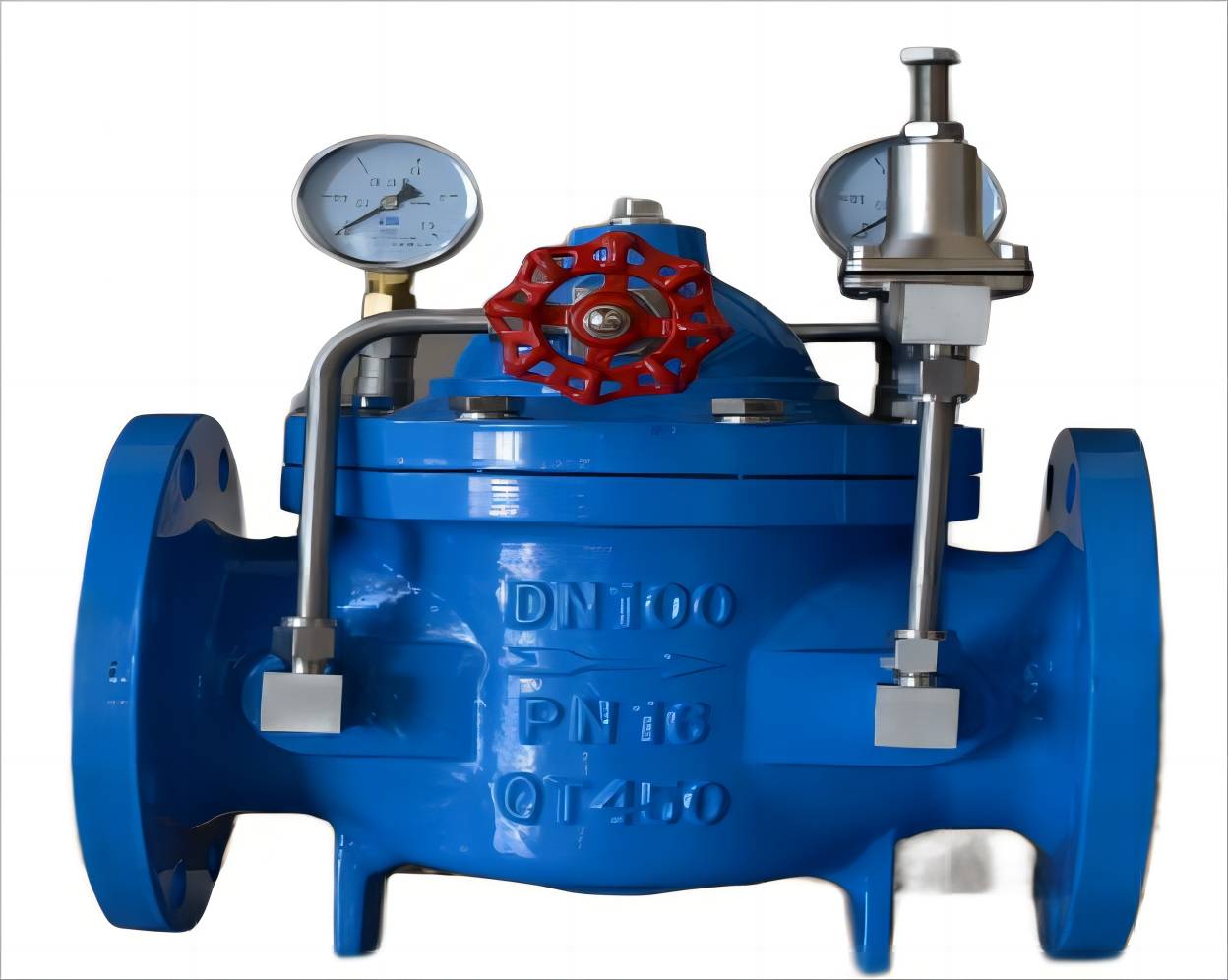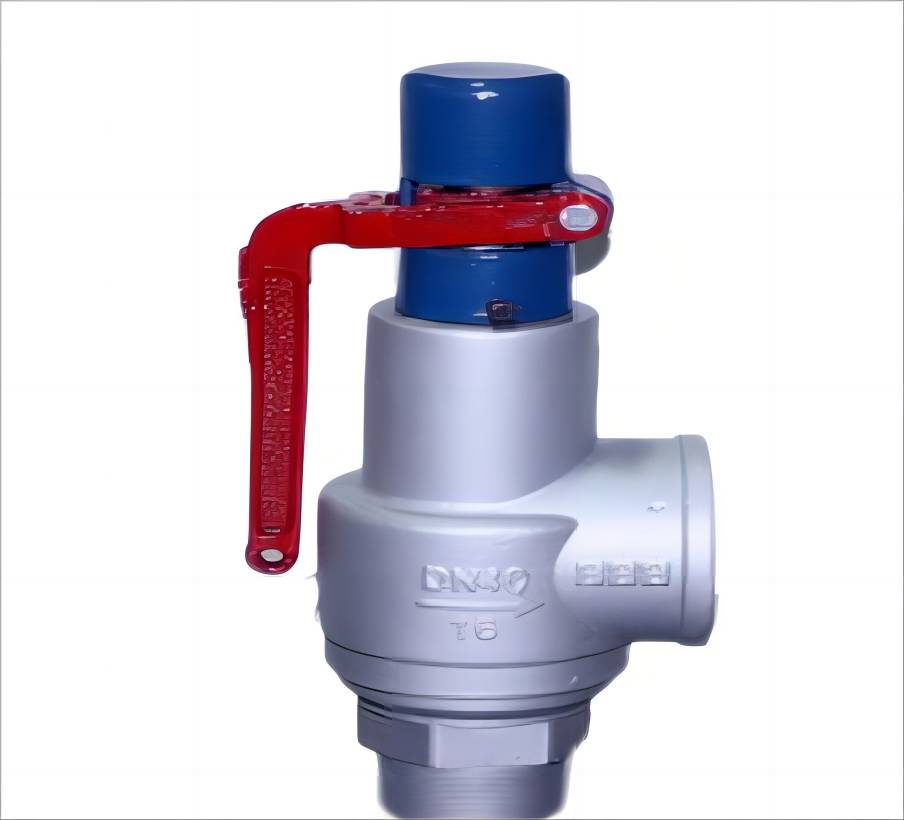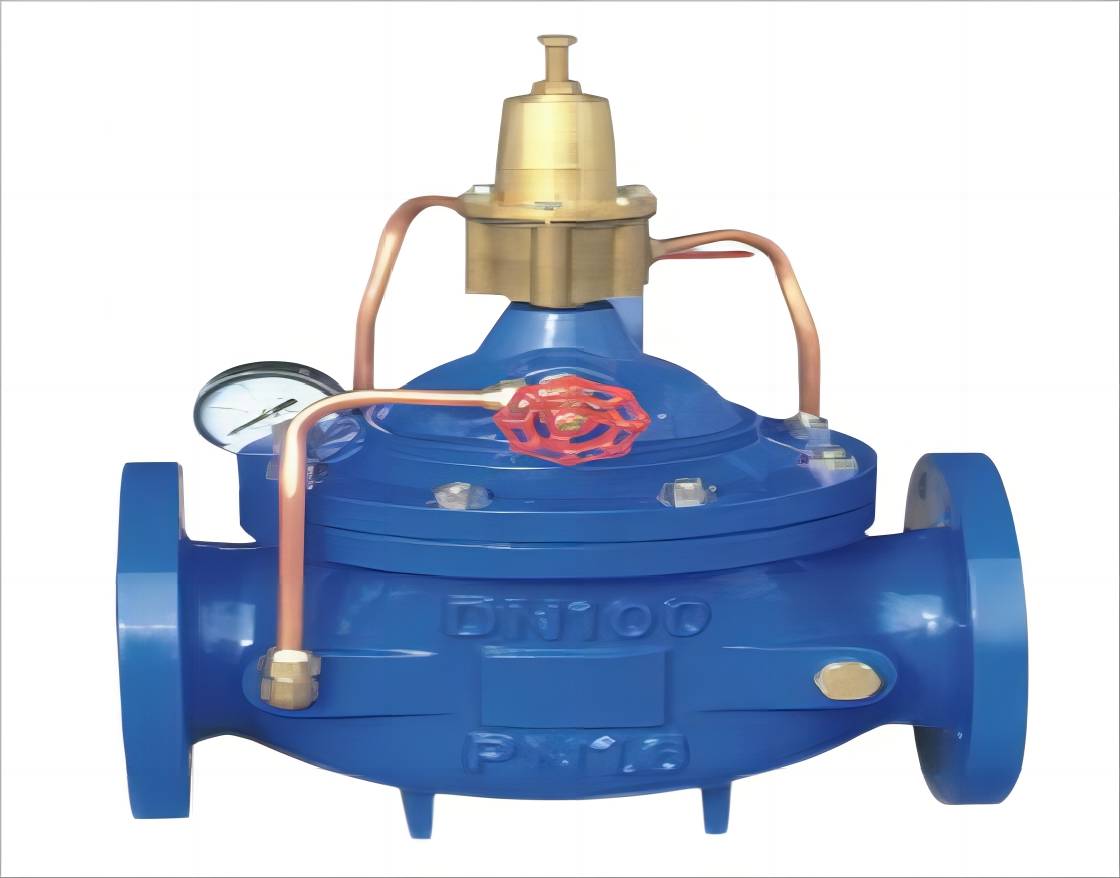Principios y aplicaciones de cuatro válvulas de presión.
Las válvulas reductoras de presión , las válvulas de seguridad, las válvulas estabilizadoras de presión y las válvulas de alivio de presión pertenecen a las válvulas de presión y la principal diferencia radica en sus funciones.
01
Una válvula reductora de presión es una válvula que ajusta la presión de entrada a una presión de salida deseada y depende de la energía del propio medio para mantener automáticamente una presión de salida estable. La característica de esta válvula es mantener los valores de presión y temperatura de salida dentro de un cierto rango mientras la presión de entrada cambia constantemente. Comúnmente utilizada en el suministro de agua doméstica, suministro de agua contra incendios y otros sistemas de suministro de agua industrial, la presión de salida de la válvula principal se puede ajustar regulando la válvula piloto reductora de presión.

02
Una válvula de seguridad es una válvula que se utiliza para evitar daños a equipos o tuberías, como calderas y recipientes a presión, debido a una sobrepresión. Cuando la presión es ligeramente superior a la presión de trabajo normal, la válvula de seguridad se abre automáticamente, lo que hace que la presión disminuya. Cuando la presión es ligeramente inferior a la presión de trabajo normal, la válvula de seguridad se cierra automáticamente, detiene la descarga de fluido y mantiene el sellado. Comúnmente utilizado en calderas, recipientes a presión y tuberías para controlar la presión que no excede el valor especificado, desempeña un papel protector importante para la seguridad personal y el funcionamiento del equipo.

03
La válvula de alivio de presión es un tipo de válvula de control hidráulico. La válvula principal está dividida en partes superior e inferior mediante un diafragma. La cámara inferior del diafragma es el canal de flujo de agua y la cámara superior es la cámara de control, que controla la apertura y el cierre del disco de la válvula principal. La válvula piloto en sí es una válvula de alivio de presión, que también tiene una sala de control y un canal de flujo de agua. La apertura y el cierre del disco de la válvula está controlado por la sala de control. La válvula de aguja, también conocida como válvula de mariposa, controla el flujo de agua en la tubería de conexión. Se utiliza comúnmente en situaciones en las que la presión es demasiado alta. Cuando la presión excede el valor establecido, la placa interna de la válvula se abre para liberar la presión de manera oportuna. Después de que la presión disminuye, vuelve a su posición original. No es muy diferente de una válvula de seguridad. Las válvulas de alivio se utilizan principalmente para líquidos, mientras que las válvulas de seguridad se utilizan principalmente para gases y vapores.

04
A pressure regulator valve is a device that maintains the medium within a certain pressure range in an area. When water is supplied from the inlet end of the pipeline, it flows through the needle valve into the main valve control room, and the outlet pressure acts on the pilot valve through the conduit. When the outlet pressure is higher than the set value of the pilot valve, the pilot valve closes and the control room stops draining. At this time, the pressure in the main valve control room increases and the main valve closes, and the outlet pressure no longer increases. When the outlet pressure drops to the set pressure of the pilot valve, the pilot valve opens and the control room drains downstream. Due to the drainage volume of the pilot valve being greater than the inlet volume of the needle valve, the pressure in the control room of the main valve decreases, and the inlet pressure causes the main valve to open. In a stable state, the inlet and outlet pressure of the control room remain the same, with the same opening and drainage.
The difference between a pressure regulator valve and a pressure reducing valve:
Pressure reducing valve: Regardless of how the inlet pressure changes, it reduces the outlet pressure to the rated value, playing a role in reducing pressure.
Pressure regulator valve: maintains a constant upstream pressure regardless of changes in downstream pressure and demand.
Working principle of pressure reducing valve:
NO.01
Direct acting membrane pressure reducing valve
As the pressure on the outlet side increases, the film moves upward, the valve opening decreases, the flow rate increases, and the pressure drop should be increased. The pressure behind the valve decreases, and the pressure on the outlet side decreases. The film moves downwards, the valve opening increases, the flow rate decreases, the pressure drop decreases, and the pressure behind the valve increases. The outlet pressure behind the valve is always maintained at a constant pressure set by the adjusting screw. Suitable for pipelines containing water and non corrosive liquid media.
NO.02
Direct acting bellows pressure reducing valve
As the pressure on the outlet side increases, the bellows moves upward, the valve opening decreases, the flow rate increases, and the pressure drop should be increased. The pressure behind the valve decreases, and the pressure on the outlet side decreases. The bellows moves downwards, the valve opening increases, the flow rate decreases, the pressure drop decreases, and the pressure behind the valve increases. The outlet pressure behind the valve is always maintained at a constant pressure set by the adjusting screw. Widely used in pipelines for water, steam, air, oxygen, liquefied gas, etc. in factories, hotels, etc
NO.03
Pilot piston pressure reducing valve
Turn the adjusting screw to open the pilot valve disc, and the medium enters above the piston from the inlet side. As the piston area is larger than the main valve disc area, push the piston downwards to open the main valve. After the valve is opened, adjust the pressure of the pressure balance adjusting spring to change the opening of the pilot valve, thereby changing the pressure above the piston and controlling the opening of the main valve disc to maintain a constant pressure behind the valve. Suitable for steam, air, and water media of various pressures, calibers, and temperatures.
NO.04
Pilot diaphragm pressure reducing valve
The working principle is the same as above. Suitable for pressure reduction applications in steam main pipelines or process engineering, it can meet the working conditions of maintaining constant downstream pressure, as well as pressure fluctuations at the inlet of the pressure reducing valve or drastic changes in steam flow rate. Suitable for low pressure, medium pressure, medium and small caliber steam or water media.
NO.05
Combination pressure reducing valve
A combination pressure reducing valve is a pressure reducing device specifically designed for water supply systems operating under complex conditions. It consists of an outlet pressure locking system, a feedback system, and a main valve body. The valve mainly consists of a main valve, a control pilot valve, a filter, a needle valve, a ball valve, and a bypass pipeline throttling part. Suitable for equipment and pipeline systems that require a certain range of temperature reduction, such as water and non corrosive liquids (gasoline, kerosene) and gases with temperatures below 80 ℃. By adjusting the inlet pressure to a desired outlet pressure value.
NO.06
Lever type pressure reducing valve
A lever type pressure reducing valve adjusts the flow rate of the medium by controlling the opening of the opening and closing components inside the valve body, reducing the pressure of the medium. At the same time, the opening of the opening and closing components is adjusted by the pressure behind the valve, keeping the pressure behind the valve within a certain range. In the case of continuous changes in inlet pressure, the outlet pressure is maintained within the set range to protect the subsequent living and production equipment. Suitable for water, steam, and air medium pipelines, by adjusting the inlet pressure to a desired outlet pressure, when the inlet pressure and flow rate change, the outlet pressure is automatically maintained within a certain range by the energy of the medium itself, but the difference between the inlet pressure and the outlet pressure must be ≥ 0.2MPA/CM.
NO.07
Pilot bellows pressure reducing valve
El principio estructural es el mismo que el de una válvula reductora de presión de pistón piloto. Adecuado para medios de vapor de tamaño mediano a pequeño y de baja presión.
Las válvulas de seguridad y las válvulas reductoras de presión son dos tipos de válvulas que son válvulas especializadas. Entre ellas, la válvula de seguridad pertenece al dispositivo de alivio de seguridad y es una válvula especializada que solo funciona cuando la presión de trabajo excede el rango permitido, brindando protección al sistema. Las válvulas reductoras de presión son válvulas de proceso que pueden reducir la presión de la logística de alta presión para cumplir con los requisitos de presión del sistema aguas abajo. Su proceso de trabajo es continuo.




